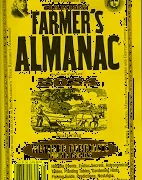Self-Help Titles Teach Variety
Browsing the shelves at Barnes & Noble, I came across an entire three-shelf section of self help books. The variety of titles was astounding, perfect examples of how a single topic can be approached in a plethora of ways:. Here are just a few of the titles:
- Already Enough
- Wild Calm
- Yay All Day
- Wander the Stars
- Slow Down, Take a Nap
- What’s Behind the Blue Door
- You Meet You
- Always Change a Losing Game
- The Other Significant Others
- Atomic Habits
When it comes to content marketing, all the titles show above could be classified as “Huhs?”, meaning that each needs a subtitle to make clear what the book is actually about. “Oh!” titles, we teach at Say It For You, are self-explanatory, and from an SEO (search engine optimization) standpoint, make a direct connection to the query readers type into their search bar.
For either straightforward or “Huh?-Oh!” titles of blog posts, one way to engage readers is using the sound of the words themselves, repeating vowel sounds (assonance) or consonant sounds (alliteration), so that searchers use their sense of hearing along with the visual.
Just as titles “grabbed” me as a bookstore browser, it’s important to have “ringing” in blog post titles, we teach. Titles matter in two ways:
- For search – keywords and phrases help search engines make the match between online searchers’ needs and what your business or professional practice has to offer.
- For engagement – after you’ve been “found”, you’ve gotta “get read”! (Of course, no clever title can substitute for well-written, relevant content that provides valuable information to the readers.)
But when blog content writers try being too clever, too general, or too cliched, that’s not good, either, Authormedia points out in “Top 5 Blog Title Mistakes Authors Make” The overriding criterion is whether you can deliver on your headline promise in the body of the post.






Follow us online!